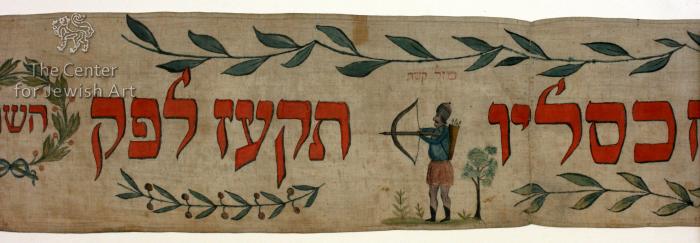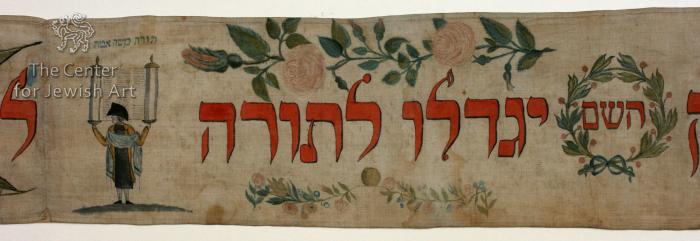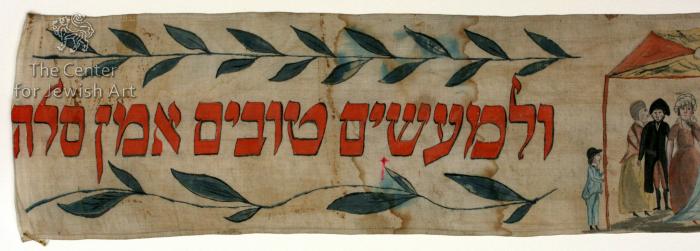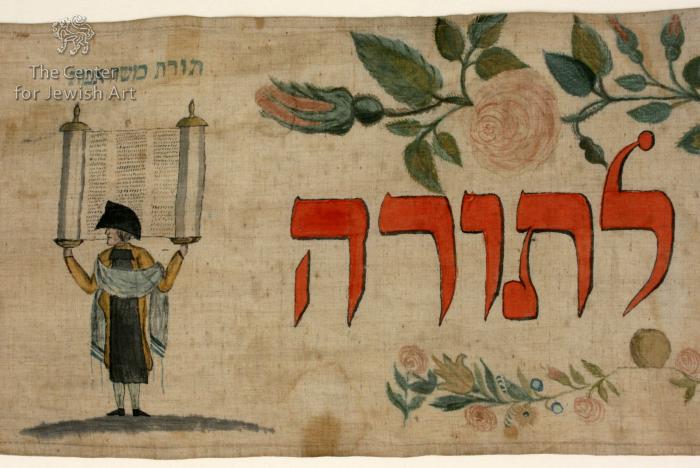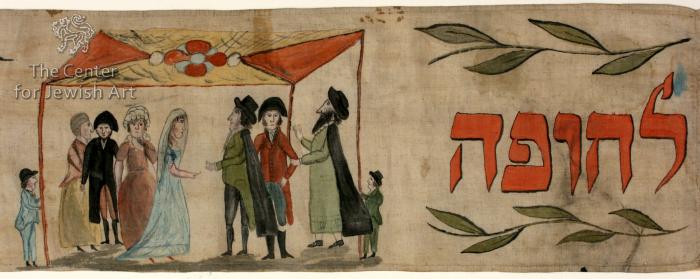Obj. ID: 39298 Wimple (Torah binder), Denmark, 1816

sub-set tree:
The following description was prepared by William Gross:
The custom of the Wimpel or Torah Binder stretches back some 500 years at least in the world of classic Ashkenaz, the German speaking lands. The cloth which held the child at the time of his circumcision, almost always of linen, was cut into strips and sewn into a long textile. On this lengthy cloth was embroidered or painted a formulaic inscription, blessing the child and wishing that he grow up to "the Torah, the Chupah and good deeds". The beginnings of the custom were executed on linen cloth with silk embroidery. In the late 18th century the custom passed to painting on the textile with substantial illustration, although late examples of embroidered Wimpels do exist. Wimpels in the Gross Family Collection have their origin from Germany, Denmark, the Czech lands, Luxembourg and Alsace. The Wimpel served as a Torah Binder, being brought to the synagogue for use on the child's first birthday, his Bar Mitzvah and the Shabbat Chatan before his marriage.
Some of the most interesting Torah binders are from Denmark. They are usually distinguished by the vegetal scrolls that create borders both above and below the inscription and illustrated scenes. This finely-painted example includes scenes such as the Akedat Yitzchak, the illustration of the appropriate sign of the zodiac, the Hagba'a of the Torah scroll by the bar mitzvah child and the Chupah with the participating figures in period dress. In this example the sacrifice of Isaac is generally derived from the same scene as presented by Matthaeus Merian in the first part of the 17th century in his engraved series of biblical illustrations.
Name: Yitzhak bar Pines bar Moshe






